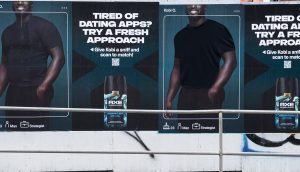Remember the days when a disgruntled customer would start a letter-writing campaign, distribute petitions or organize local boycotts? Back then, agencies knew that an individual consumer’s ability to influence the greater population was relatively small and containable. More often than not, the complaint would be addressed through a form letter, or simply ignored.
Today, social media have the power to transform an under-the-radar consumer into a powerful influencer overnight. Should consumer backlash hit popular social-networking sites like Facebook, YouTube and MySpace, the issue at hand may gain massive attention and create serious negative brand impact. The combination of enablement, ease of use and an audience ready to eat up anti-corporate messaging can make for bitter recriminations in marketing and PR boardrooms. And the frequency of negative, high-impact situations is increasing, with consequences falling anywhere between corporate embarrassment and class-action lawsuits.
Consider the infamous video regarding Apple’s iPod battery which, at the time, failed to hold a charge after 18 months. This led to a class-action lawsuit and a shaky moment in the growth of the iPod brand. Now consider how Apple would have fared had there been no community of loyal consumers to counter-attack and help heal the brand.
One could certainly argue that the complaints Apple faced were warranted. But what happens when the complaint is unwarranted? Something amazing: Consumers may rise up in social media spaces as brand advocates. Acting like the white blood cells in an immune system, these enthusiasts will combat the lie-spreading pathogens and destroy their credibility by citing their own positive experiences with a brand or product.
And they’re free to do so in ways a company could never publicly do before. Using brute force, quiet sophistication, bitter irony or crazy out-of-nowhere banter, consumers can meet the pathogen on its own turf with credibility that PR and advertising have to struggle to achieve.
The lesson? Brands should cultivate their own auto-immune systems. The right social media platform will create a culture of collaboration, as long as there’s something in it for the advocate. And a successful community can offer many things to consumers seeking connection via the product, segment or enabled lifestyle. It’s the reason why they’re there, so help them flourish in it.
If pathogens attack, your community will respond before you even know what happened, often thwarting an offence before it hits your desk as an issue. The tremendous speed, volume and credibility your brand advocates will proffer make your brand’s auto-immune system a remarkably powerful tool in preserving the health of your core message. You only have to read comments at YouTube or Digg to see example after example of brand advocates defending corporate attacks with loyalty and tenacity.
Social media users do not tend to stick to one site; they often aggregate content from other sites, particularly items that polarize ideas. Consumers will actually manage the brand-busters on their own via the platform you have enabled. That gives the social media platform creator tremendous influence over the brand, with personal ownership going to the immune system, reinforcing its community spirit.
It’s fair to say that the tested and true methods of traditional PR and mass communication remain vital in the fight against unwarranted and unfair attacks on your brand. However, in today’s social mediascape, brands that also manage a healthy immune system of consumer advocacy will have a better chance of growth and prosperity.
Collin Douma is group CD at MacLaren MRM. (collin.douma@maclaren.com)


















